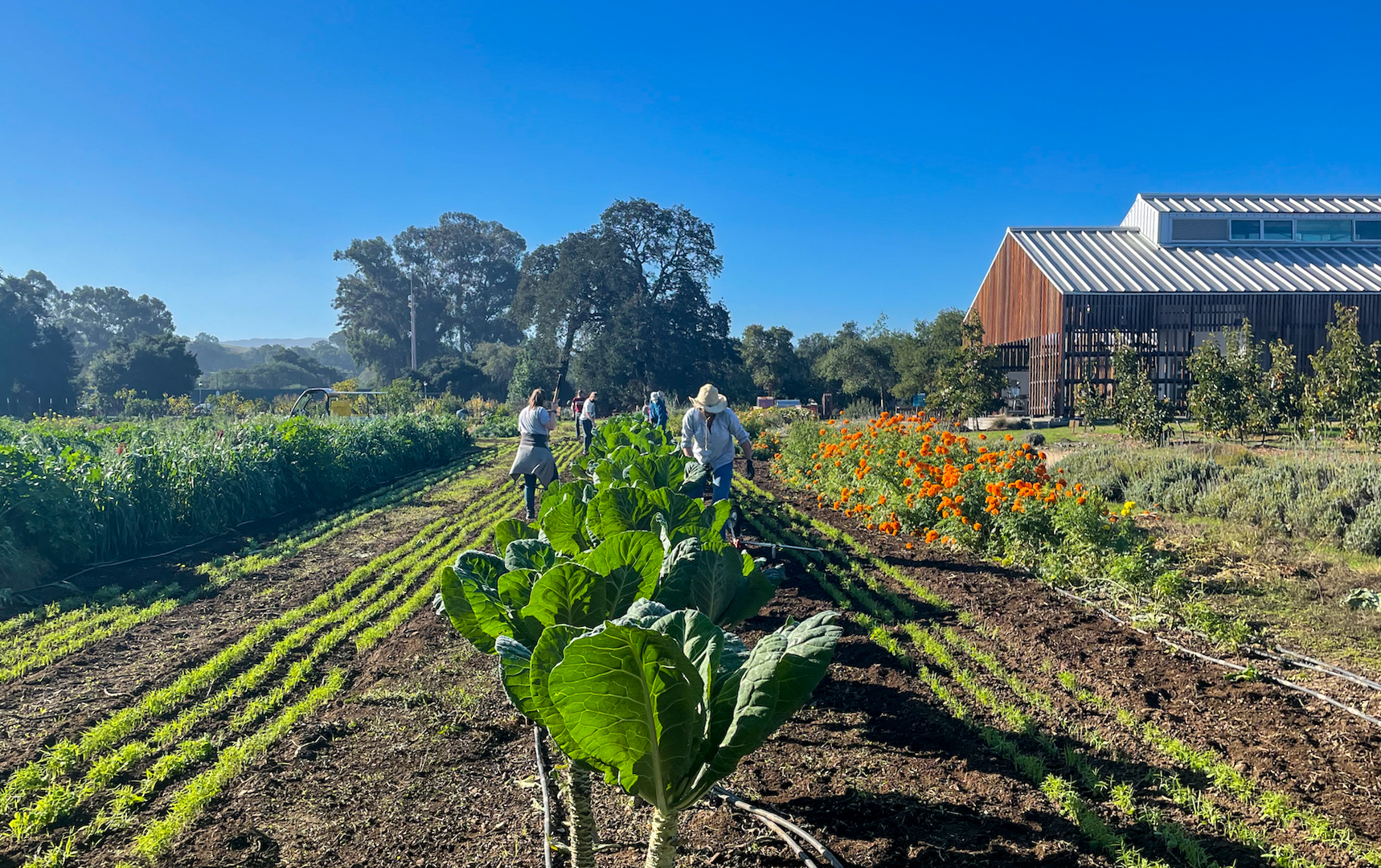Stanford engineering professors and students developed a clean fertilizer system by mimicking the method by which plants are naturally fertilized — lightning. The fertilizer system, developed by the Stanford Plasma Physics Lab, is an environmentally-safe and affordable alternative to conventional fertilizers, which can reduce fertilizers’ contribution to greenhouse gases and address fertilizer shortages.
“This is pretty much a completely green process,” said Christina Sze ’24, who was a member of the research team. The project addresses climate change and global warming by providing a way to reduce energy consumption in the agricultural sector. “I think that’s what’s really exciting to me about working on this project,” Sze said.
Conventional fertilizers come as granules with nitrogen-rich ingredients like ammonium nitrate and urea. While effective in fertilizing plants, these ingredients are toxic and combustible and tied to major disasters like the Beirut explosion in 2020 and the West Fertilizer Company explosion in 2013. High concentrations of these chemicals are frequently released as run-off due to unforeseen weather events like rainstorms, despite being designed in a solid form to facilitate a slow release. Run-offs contaminate neighboring water systems and compromise the growth of algae and aquatic ecosystems.
Sze’s research team worked on designing a system to turn air, water and electricity into plant food, as a way to decrease the potentially harmful effects of conventional fertilizers. Members of the research team include mechanical engineering professor Mark Cappelli, electrical engineering associate professor Juan Rivas-Davila, and students mechanical engineering postdoctoral scholar Benjamin Wang, electrical engineering Ph.D. student Jiale Xu and Sze.
Heat from lightning produces high-temperature air plasma, which causes nitrogen in the air to dissociate and react with oxygen, resulting in nitrate ions that dissolve in water and reach the soil through rainfall. In a similar process to lightning, clean fertilizer uses electricity to create low-temperature air plasma, maximizing the energy to produce nitrate ions in water at higher concentrations than in rainwater. The use of renewable electricity, like solar, wind, geothermal, tidal and possibly nuclear energy, significantly decreases clean fertilizer’s carbon footprint compared to the production of commercial fertilizer, which makes up 3% of anthropogenic carbon dioxide emissions due to the use of fossil fuels, Cappelli said.
“The idea of mimicking lightning to produce nitrates for fertilization is not new,” Cappelli said, adding that while the idea has existed for 100 years, it was expensive and difficult to scale. “We thought about trying to engineer this to be relatively inexpensive, very low cost.”
The team tested the fertilizer’s performance with the addition of phosphorus and potassium, after finding that their clean fertilizer improved plant growth. The results were successful. The fertilizers also resisted mold — when compared to commercial fertilizers, which sometimes created mold growth on the surface of the soil.
Another strength of the clean fertilizer is that it was customizable, Sze said. Commercial fertilizers available at traditional plant stores come in a fixed ratio, “but when we’re generating it, we can actually choose the dilution and the concentration of each of the chemicals, the nitrogen, phosphorus and potassium,” she said.
Researchers field tested the fertilizer at Stanford’s Siebel Varsity Golf Training Complex in 2021, as turf grass is one of the largest irrigated crops in the U.S., Sze said. “It actually covers more surface area than corn, which is a huge crop in America, so we wanted to test how well it worked as a fertilizer on turf grass to see if this could be a viable product that we can take to market one day.”
They were focused on designing the system to work efficiently on a larger scale. The entire golf course, which spans 20 acres, can be serviced by 10 to 20 of their 10-kilowatt units.
A smaller, 0.5-kilowatt unit prototype is now being tested at the U.S. Department of Agricultural Research Service facility in Salinas Valley. The current goal is to adapt the design of the fertilizer production unit for small farms with 0.1 to 1-megawatt clean fertilizer units powered by photovoltaic farms, enabling smaller farms to compete with large, established farms.
Although this new method of fertilizer production is more costly than traditional fertilizer production, the unit that generates clean fertilizer can operate on the site where it will be used, which reduces labor and transportation costs, Rivas said. The system can also be run at times when electricity is in excess to save costs and ultimately be more cost-effective in the long term.
“Instead of having someone transporting these dangerous substances, you can just [produce fertilizer] on site, just out of thin air and you can do that efficiently,” Rivas said.
The researchers explored other ecological applications of their research on air plasma, outside of agriculture. Cappelli said he used the same low-temperature plasmas to extract carbon dioxide from seawater, a process that decreases its acidity and prevents further damage to the ocean’s ecosystem. He is working on a similar technology that captures carbon dioxide from the air to decrease air pollution with Doerr School of Sustainability Dean Arun Majumdar and chemical engineering assistant professor Matteo Cargnello.
Cappelli said the team’s research is especially relevant due to contemporary geopolitical issues and the possibility of food shortages because of fertilizer. “This whole project has really been an eye opener for me and for the students involved because it came in a time when we needed it most,” he said.
A previous version of this article inaccurate stated that Benjamin Wang was a microbiology and immunology Ph.D. student and that Jiale Xu was a first year Ph.D. student. Additionally, a previous version of this article incorrectly stated when the West Fertilizer Company explosion happened. The Daily regrets these errors.
